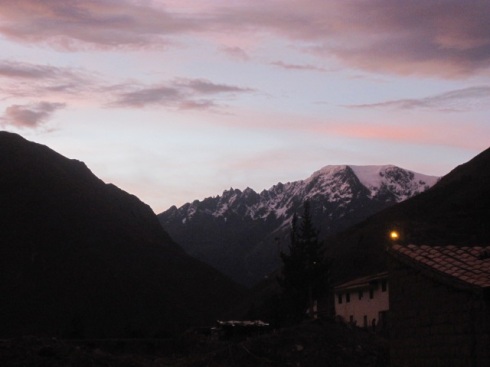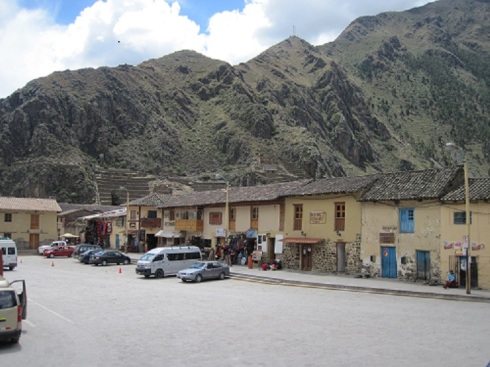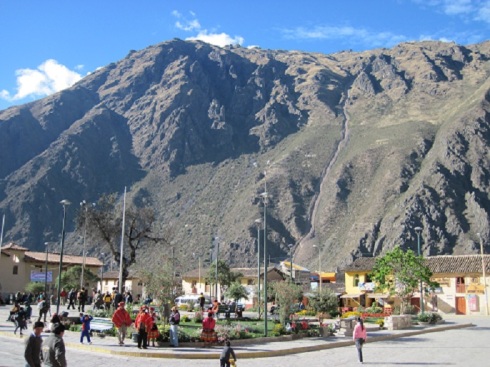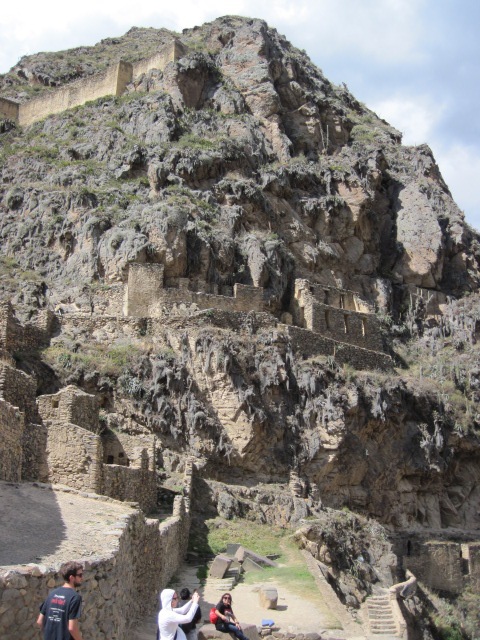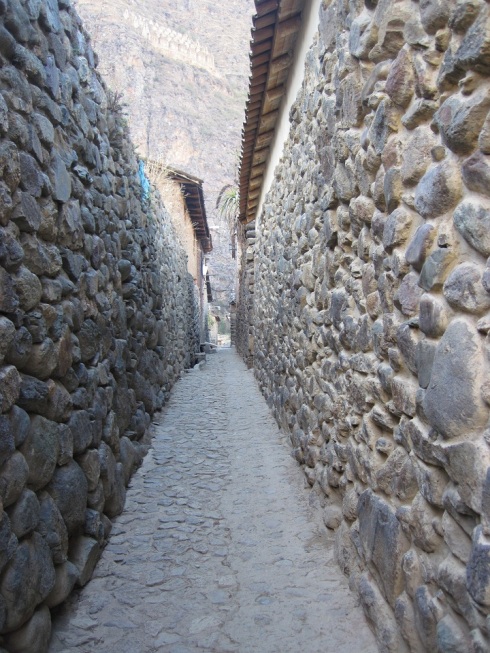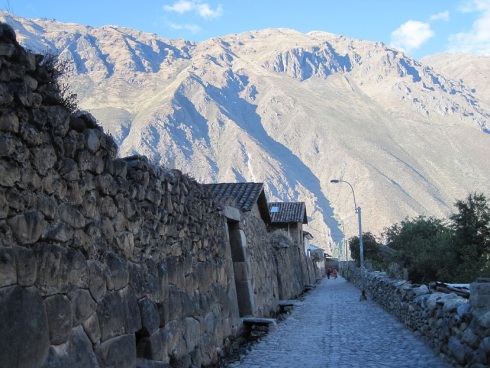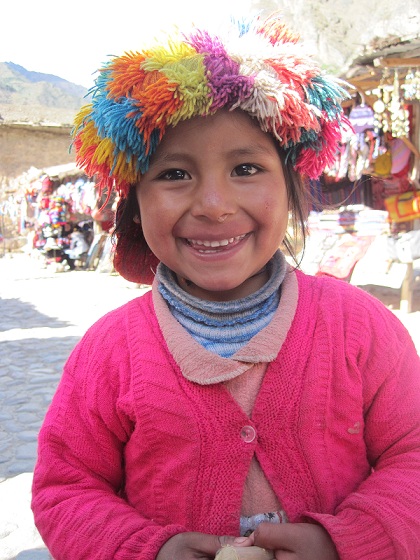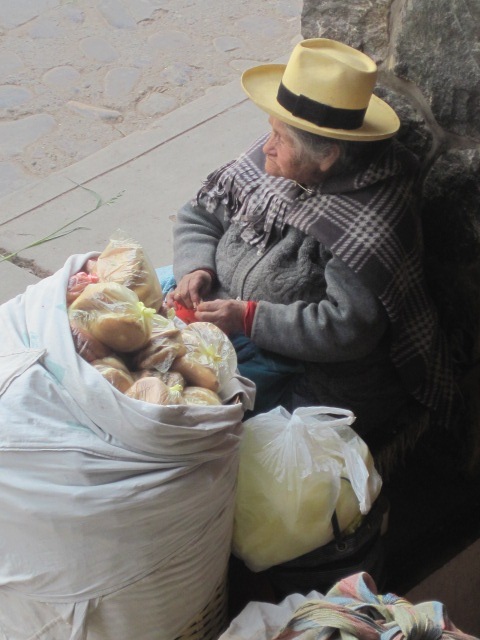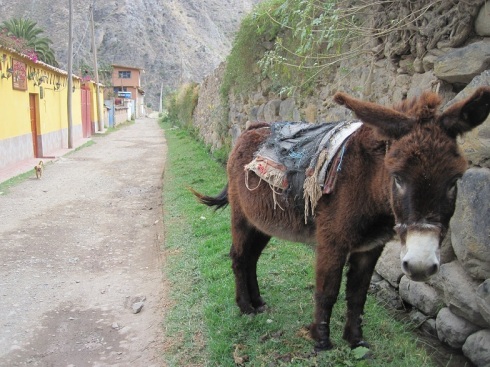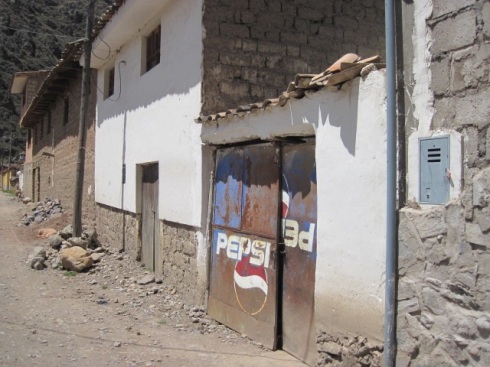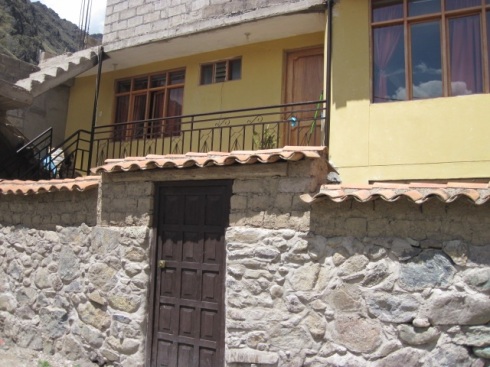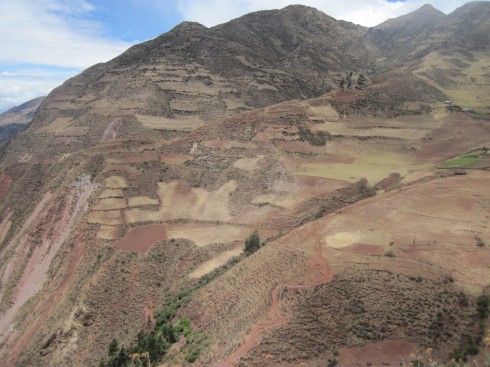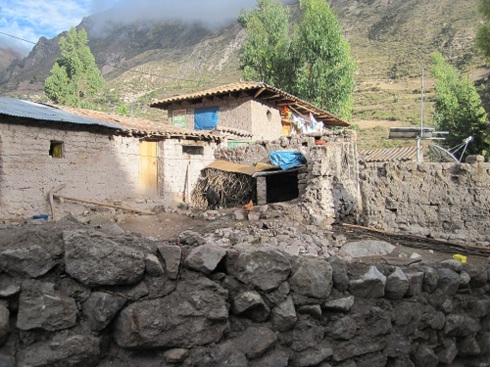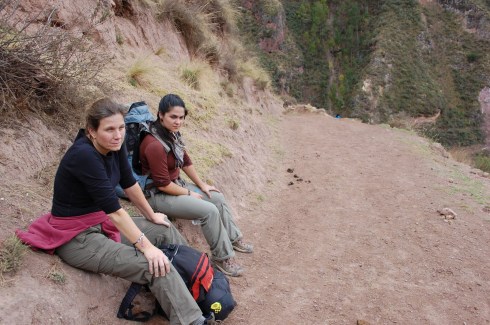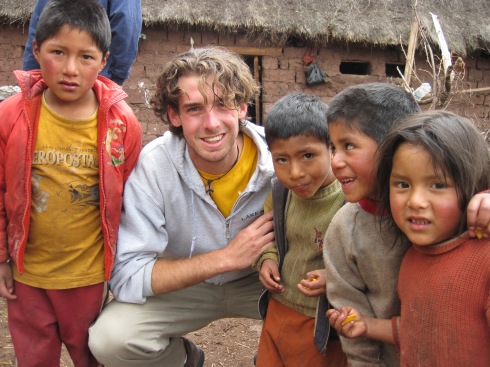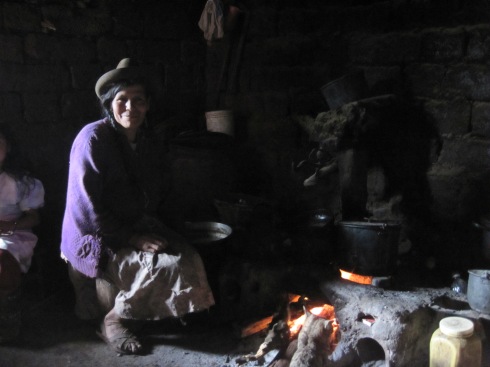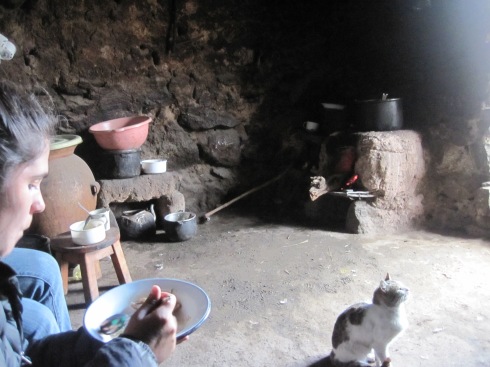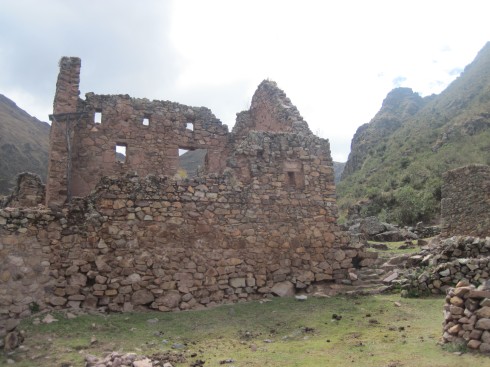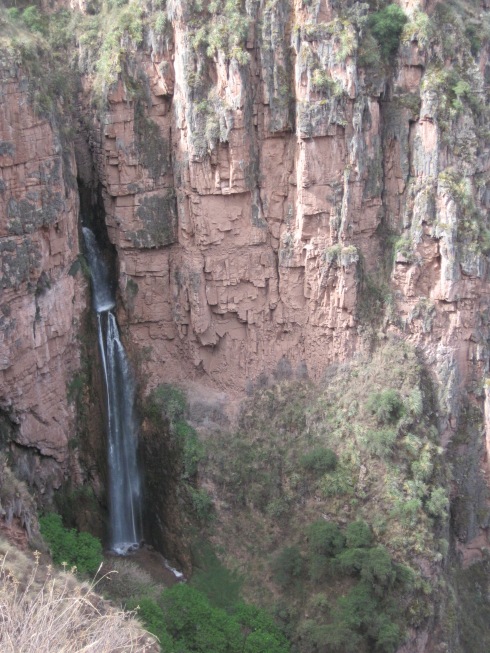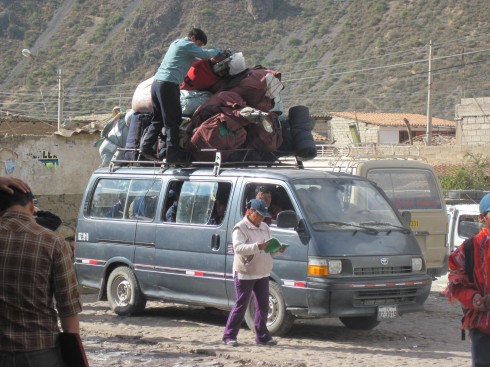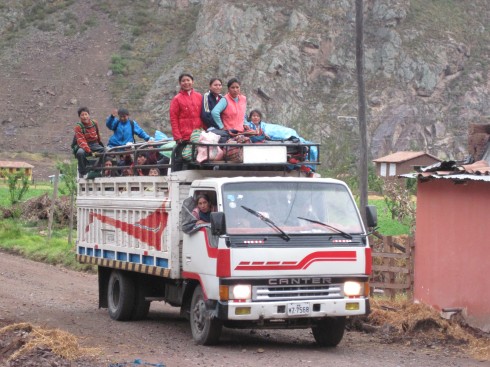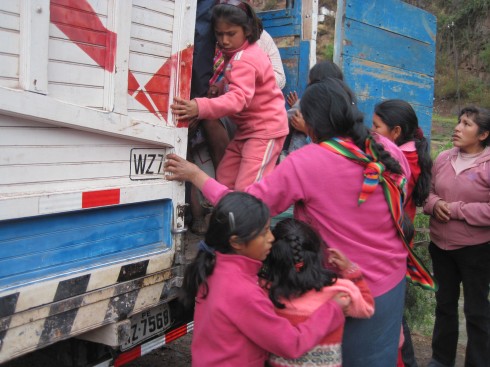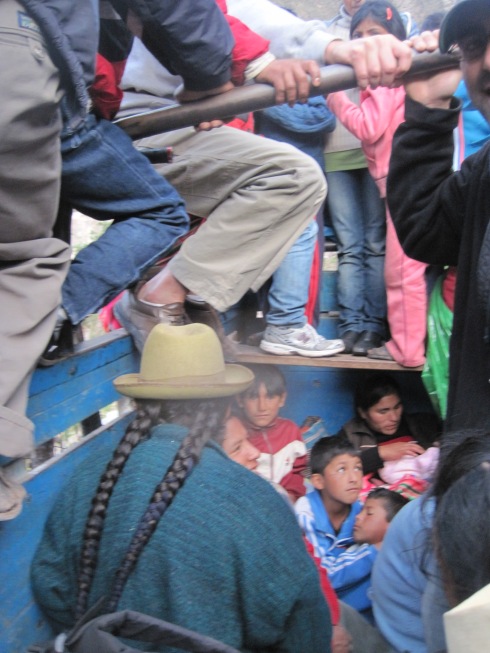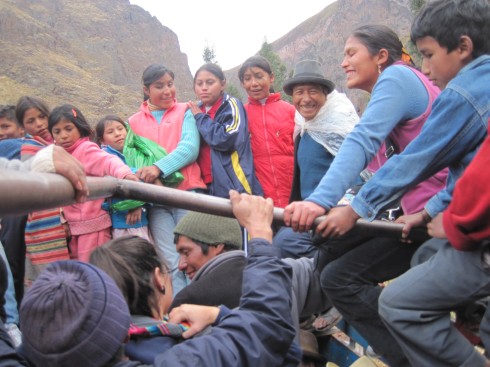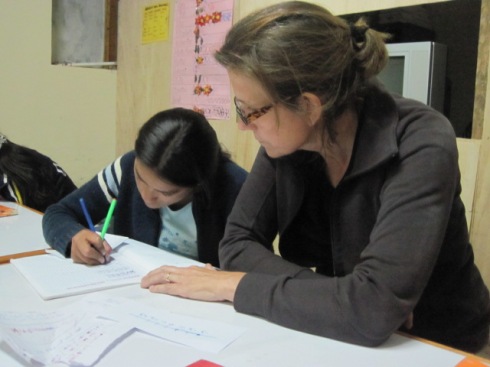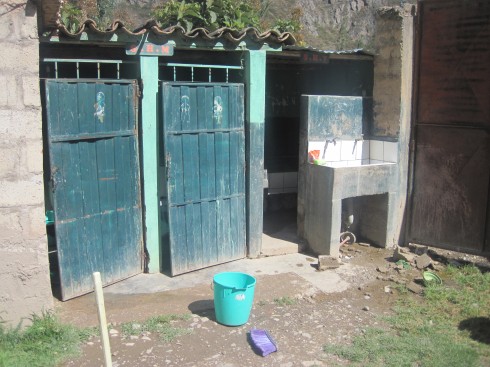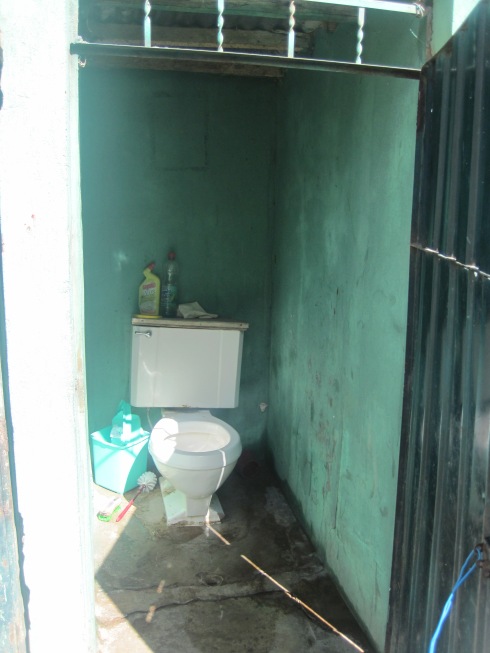I can look out my window and see, 100 feet in the distance, a solid wall of mountain. It goes straight up for about 3,000 feet. That’s right, over half a mile. It is beautiful. It is breathtaking. It is like something I have never experienced before. Slightly to the right is another mountain – with a glacier of top. A flipping glacier! Imagine that – not only to see a glacier – but to live right next to one. That’s right, here it is burning hot in the midday sun, and I am looking at a glacier. A world far away from manicured grass lawns or cement sidewalks. This is awesome.
Every single day, I catch myself, not once, not twice, but many many times, just looking up – how is it that you cannot ignore the shear awesomeness that surrounds you? If I go downtown to pick up some shampoo, recharge my phone, get some over-the-counter antibiotics without a prescription, or get some photocopies made (in our WalMart of sorts – all being overseen by one of the many varieties of Jesus that is ever-present – Señor de Choquekillka)
– there they are…
If I turn to rest in the plaza, I still can’t escape them –
They are gorgeous, awe-inspiring, and need I say more? They just really kind of put you in your place. They sort of make you feel insignificant. I mean, here they are, in all of their massiveness – their beauty – their downright powerfulness. All of a sudden you feel like a little speck of sand on the face of the earth. Your problems, your worries – just seem to fade away. I mean, compared to the grandness of these mountains, everything else seems teeny. Really.
But that’s not all. Carved into the mountains are ancient Incan Ruins. Outposts for the military to guard the Incan trail from Cusco to Macchu Pichu. Grain storage houses. And royal thrones carved into the mountain so that the emperor could sit and look out over his people and watch the sun set. Yes, it’s all right here, in my little town.
And the streets themselves are original Incan roadways…
And that’s because Ollantaytambo is the oldest continuously inhabited Incan town that exists! Imagine that… it really blows my mind to think that the stone houses that are in this old section of town were actually built by the Incans. And their families have been living here ever since! They are set up communally – so if you go in one of the doorways you see below, you will find a courtyard surrounded by dwellings where several families live.
The townspeople are quite colorful, too. For instance, here’s a local kid that hangs around with her mom and sisters. Granted, they are looking for tourists to take their photos, and I did give her 50 centimos, but they are, nonetheless, a beautiful indigenous people just trying to make a buck. No protesting for them! They’re just out there working to put food on the table – and happy to have the chance to do it.
Someone not posing for photos is the bread lady. She sits outside the market every day – and for 1 Sol (about 30 cents), you can buy a bag of 5 panacitas (little breads) that are fresh from the bakery. The bread lady is there, rain or shine, and is a real fixture in our town. You’ll notice her traditional dress, braided hair and hat. That is NOT for show. Most traditional women dress like this. Every day.
My new apartment is in a newer part of town. It is, in fact, in one of THE nicest houses in Ollanta. We really lucked out to get such a nice place. Our road, though, is not new. Or maybe it is too new. Either way. It is not paved, nor is it cobblestone. It is dirt. And rock. And you never know what you will find in it. I have come out of my front door to find random horses – just kind of hanging out in front of my house. Not tied up, mind you. Just chillin’ in the road. Of course there are always stray dogs, but several times I have woken up to the squealing of Pigs!!! Right out my front window! And, on more than one occasion, I have come home to find a burro tied up outside the house.
Our house is actually a little further down the street, next to the house with the Pepsi sign on it.
The new house on the block!
Which brings us full circle. Back to my house, and my own little view. Of the mountains in my yard – and out the window. As you can see, there is no escaping the mountains. Wherever you go, wherever you are – just look up – and there they are. Giving you a sense of security, a sense of belonging to something far greater than you can comprehend. And I realize that it is not just MY view that does this to one’s soul. Anywhere that I’ve lived, or that I’ve been, there is always that nature-inspired awesomeness. Whether it’s the waves lapping in the ocean or the dense, lush forest, the starry night in the city or the throngs of people on the subway – we are part of something a lot larger than ourselves. Everything is one – and we are just a little speck in it. But all of our specks together create an incredible being. I love to look around every day, and find all of the reminders of that. It makes you feel like you are contributing to something bigger, something grand… something good.
